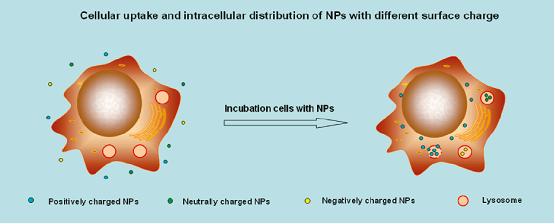Chitosan-based nanoparticles (NPs) have attracted booming interests in biomedical areas based on their prominent merits such as biodegradability, biocompatibility, and mucus adhesion. To optimize their biological effect, researchers have been dedicated to modify these NPs with PEG or other targeting moieties. However, intrinsic physical properties of NPs are also gradually exhibiting their capability to adjust the nano-bio interaction and further regulate their biological applications. Therefore, a clear understanding of the effects of physical properties on the cytological response is of great importance for chitosan-based NPs.
Prof. MA Guanghui and her group from Institute of Process Engineering, Chinese Academy of Sciences investigated the effect of surface charge on cellular uptake profiles (rate and amount) and intracellular trafficking. Three kinds of NPs (~215 nm) with different surface charge were fabricated via membrane emulsification technique. They were with uniform size and other identical physicochemical properties, minimizing any difference among the NPs except for surface charge. Eight cell lines were studied in the research rather than restricting to a single one, which could help to obtain a representative conclusion. The results showed that the cellular uptake rate and amount were both positively correlated with the surface charge in all cell lines. Subsequent intracellular trafficking indicated that some of positively charged NPs could escape from lysosome after being internalized and exhibited perinuclear localization, whereas the negatively and neutrally charged NPs preferred to colocalize with lysosome. These results will facilitate building high efficient biomedical systems in clinical use of chitosan-based NPs.
This work was supported by the National Basic Research Program (973 Program, 2009CB930305), the National Nature Science Foundation of China (50703043), and the Chinese Academy of Sciences (KJCX2-YW-M02). The research results were published in Biomacromolecules.

Schematic diagram showing the major conclusion of this study
 Search
Search




 京公网安备110402500047号
京公网安备110402500047号